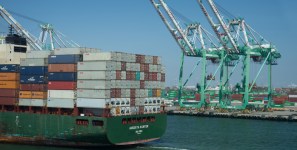Dear Shippers, It’s Time for Creativity
To offset many of the problems we are encountering today ― inflationary pressures, port delays and labor shortages ― shippers must think and act differently to ensure resilience. To be successful, leaders must take a new, more creative approach to minimize today’s adversities to increase revenues. Here are some new ways companies are successfully mitigating the plethora of challenges facing global trade today:
1. Creativity Within Modes and Port Selection: Presently, more than 100 container ships await dock space at the Los Angeles and Long Beach ports1, and the World Container Index price for 40 ft. containers stands at $9,669.472, 276% higher than a year ago. Shippers are not only struggling to secure capacity due to port inefficiencies but are paying premium prices even when they can secure containers. Once reserving container space, shippers then have to deal with long lead times. The door-to-door transit time for a container from China to Chicago is now 73 days versus 35 days in pre-pandemic times.
Minimizing the impact on your organization will require teams to think more creatively and collaboratively. For example, in the past, when Coca-Cola could not supply their production facilities due to limited vessel space, they refused to accept the current situation as their only option. Instead, their procurement and supply chain teams collaborated to leverage a nontraditional method of shipping. They decided to ship their manufacturing materials via bulk vessels typically used to ship dry cargo3. Coca-Cola safely shipped their products by securing the materials using plastic wrap and unloading at noncongested ports to avoid excessive demurrage fees being levied on shippers. Their priority was to keep the product lines running, and they accomplished it by actively seeking out alternatives.
Organizations need to think more broadly and explore the feasibility of using all available options, such as Coca-Cola did. Also, they must consider avoiding the West Coast ports whenever possible, as other ports, such as those on the East Coast, are currently less congested.
2. Seek Unconventional Partnerships: The boost in e-commerce sales and the growing driver shortage have negatively affected domestic trucking capacity. The result is like what we see in ocean shipping: premium prices and increased lead times. In pre-pandemic times, consumers took advantage of quick and reliable e-commerce delivery channels made popular by the likes of Amazon. Now, however, they are left hoping their products arrive within their expected delivery window, as shipping delays continue to become more common.
Understanding that customers have an insatiable appetite for fast and reliable delivery, Home Depot found a way to offer added convenience to its e-commerce business. Home Depot will become the first retail client in Walmart’s new delivery-as-a-service business called GoLocal. According to a Home Depot spokesperson, by leveraging Walmart’s existing delivery network, Home Depot will offer same-day and next-day delivery in select stores, with plans to expand by the end of the year.
In a market where capacity is hard to come by, Home Depot expanded its options by leveraging new partners who had capabilities that spanned beyond their own while offering convenience to the customer. As a result, they will reach more customers than before at lower costs to the consumer. Stephanie Smith, a senior vice president of supply chain for Home Depot, said, “This partnership brings us even closer to our goal of offering same-day or next-day deliveries to 90 percent of the U.S. population.”4 Seeking partnerships, even from those who may be competitors, is an excellent way to reduce the consumer’s expenses. Also, shippers should begin exploring alternatives in last-mile delivery to increase customer satisfaction, including added convenience and reduced shipping costs.
Difficulties in the supply chain are impacting shippers and consumers alike. On the one hand, consumers are experiencing inflation in certain products; on the other hand, shippers see their profits eroded. From either end, this situation is far from ideal. Labor shortages and capacity constraints are but two of several factors are contributing to higher costs. Organizations will have to wrestle with whether they will pass some of these costs on to consumers or allow them to affect margins. Either way, to overcome this dilemma, shippers must get creative to offset rising costs.
__________________________________________________________________
Alex Hayes and Derrick Lopes are Senior Associates at GEP, a leading provider of procurement and supply chain solutions to Fortune 500 companies.
3 https://www.businessinsider.com/coca-cola-uses-bulk-vessels-amid-shipping-crisis-2021-10





Leave a Reply